The following is a compilation of Thanksgiving trivia from The Old Farmer’s Almanac & the Indianapolis Star. My thanks to both of these fine publications.
It’s Thanksgiving Day, and millions of Americans will celebrate by tucking in for a big meal with friends and family, by watching football games, and maybe the annual Macy’s Thanksgiving parade, too.
How to Celebrate Thanksgiving Day
Today, folks celebrate Thanksgiving for many reasons. For some, it remains a way to express gratitude for the harvest, for family, or for a higher power; for others, it’s a holiday built on being united as a family (in person or virtually!) and sharing a special meal.
A bountiful feast featuring turkey has become the traditional Thanksgiving fare, with over 90% of Americans eating the bird on this holiday. But did you know that turkey was a rare treat at one time? During the 1830s, an 8- to 10-pound bird cost a day’s wages!
Other common Thanksgiving traditions in the United States include volunteering for those less fortunate by donating food or time to homeless shelters or those in need. Sometimes, communities hold “turkey trot” runs or parades. And the president of the United States and some U.S. governors will often “pardon” one or two Thanksgiving turkeys each year.
How Did the Pilgrims Come to Settle Here?
When certain men and women of Scrooby, England, were persecuted for separating themselves from the Church of England, they, as Pilgrims, fled to Leiden, Holland. Upon the execution of separatist leader James of Barneveld on May 13, 1619, they realized that Holland was no freer than England and prepared to go to America.
On July 20, 1620, after putting their plans into effect, they asked for the parting words of their beloved pastor, John Robinson. The next day, they boarded the ship Speedwell, anchored where the canal from Leiden entered the Maas (or Meuse, a river flowing into the North Sea) at Delfshaven, and sailed for Southampton, England.
After misadventures and more farewells, these 102 brave souls departed on the Mayflower on September 6, 1620.

The Mayflower arrived at what is now Provincetown, Massachusetts, at the tip of a curved peninsula later named Cape Cod, on November 21 and, on that day, drew up one of the most significant documents of American history, the Mayflower Compact. The Compact was a constitution formed by the people—the beginning of popular government.
They then explored the lands along the bay formed by the peninsula. On December 22, after holding the first town meeting in America to decide where to build their homes, the Pilgrims went ashore at a site now called Plymouth Rock. There, on the shore above the rock, they settled. After 400 years, their descendants and those of the Puritans are still sailing along.
While historians have debated its humble origins, here’s a look at what we know about Thanksgiving, along with answers to common questions asked about this holiday.
When is Thanksgiving?
By an act of Congress, Thanksgiving is celebrated on the fourth Thursday of November each year.
Is Thanksgiving a federal holiday?
Yes, Thanksgiving is a federal holiday listed on the U.S. Office of Personnel Management. There is one more federal holiday left in 2025 — Christmas.
When was the first Thanksgiving?

The early history of Thanksgiving dates back to the autumn of 1621 in Massachusetts. A romanticized version of the holiday paints a rosy picture in which the Pilgrims graciously invite Native Americans to share a bountiful meal. That’s not entirely true, say historians, and one of several myths about Thanksgiving.
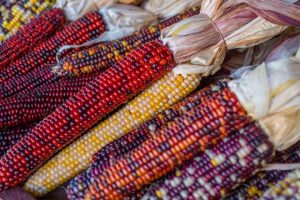
The Pilgrims did celebrate a three-day harvest festival in 1621. Still, there’s no record that the Wampanoag tribe in Massachusetts received an official invitation to the party ahead of time, according to the National Endowment for the Humanities.
Instead, they might’ve crashed it.
What happened at the first Thanksgiving?
Historians believe 90 members of the Wampanoag tribe arrived at Plymouth Colony ready for battle after hearing the Pilgrims fire their guns into the air (don’t do that, by the way). But it was all a misunderstanding. When the tribe, led by Chief Massasoit, learned that gunfire was part of the celebration, they decided to stay for the feast and later brought the pilgrims five deer to add venison to the menu.
However, whatever peace they enjoyed didn’t last.
Relations between both sides deteriorated by the 1670s to the point of bloodshed. At one point, the severed head of Massasoit’s son was mounted on a pike outside Plymouth Colony. Today, not all Native Americans celebrate Thanksgiving, pointing out how Native people suffered death, disease, enslavement, or forced relocation by white European settlers.
The idea of “thanksgiving” for the harvest is as old as time, with records from the Egyptians, Greeks, and Romans. Native American cultures, too, have a rich tradition of giving thanks at harvesttime feasts, which began long before Europeans appeared on their soil. And well after the Pilgrims, for more than two centuries, individual colonies and states celebrated days of thanksgiving.
When did Thanksgiving become a national holiday?
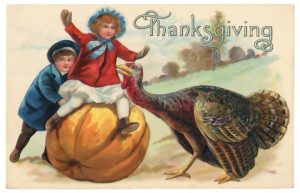
President Abraham Lincoln declared a national Thanksgiving holiday in 1863. It was, say historians, a gesture meant to reconcile a deeply divided country in the midst of the Civil War.
Lincoln wasn’t the first president to issue a Thanksgiving proclamation — George Washington did it in 1789. Lincoln’s order, however, set a precedent for observing Thanksgiving on the last Thursday in November.
Thanksgiving and politics: The U.S. celebrated Thanksgiving twice for this weird reason
In 1939, President Franklin D. Roosevelt moved Thanksgiving up a week to spur retail sales during the Great Depression, according to the National Archives. Sixteen states refused to accept the change, and Thanksgiving was celebrated for two years on two different dates.
The decision, called “Franksgiving” by Roosevelt’s detractors, proved so unpopular that Congress passed a law in 1941 making Thanksgiving the fourth Thursday in November.
Did Pilgrims eat turkey at the first Thanksgiving?
According to History.com, turkey was not on the menu during the Pilgrims’ autumn feast. Instead, they would’ve likely eaten local seafood such as mussels, lobster, and bass. The Wampanoag also brought deer and fruits, including pumpkin.
How long has pumpkin pie been a traditional part of Thanksgiving?
Pumpkin pie has been a staple on New England Thanksgiving tables since the turn of the 18th century. Legend has it that the Connecticut town of Colchester postponed its Thanksgiving feast for a week in 1705 due to a molasses shortage, according to History.com.
Thanksgiving lore: What is a wishbone?
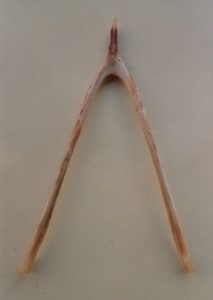
Other than a drumstick, perhaps the most sought-after part of a Thanksgiving turkey is the furcula, or “wishbone.” The furcula, explains Delish, is the fusion of two clavicles, bones located near the bird’s neck and breastbone, which helps it fly.
A Thanksgiving tradition in some households involves two people who make a wish, then pull the furcula apart until it snaps. The person with the larger half is said to get their wish granted.
How did the wishbone tradition start?
The tradition of breaking the wishbone, say historians, goes back thousands of years, long before the first Thanksgiving.
The Etruscan civilization, 2,400 years ago in ancient Italy, experts say, believed the future could be divined using chickens, which were said to embody magical qualities. According to Charles Panati’s “Extraordinary Origins of Everyday Things,” the Etruscans would save a chicken’s furcula and set the bones outside to dry in the sun.
At first, wishes were made on the unbroken bones of the furcula by gently stroking them. Hundreds of years later, writes Panati, the Romans adopted similar traditions from the Etruscans, who by then had begun snapping the wishbone, which some experts say may have begun as a way to preserve the finite resource of birds.
Later, writes Reader’s Digest, the ancient Romans brought the tradition with them as their armies occupied vast swaths of Europe, including ancient England. The tradition of breaking a wishbone eventually found its way to the New World, becoming associated not just with chickens but also with turkeys.
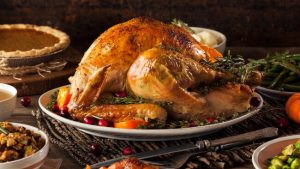
How many turkeys are eaten on Thanksgiving?
Roughly 46 million turkeys are consumed on Thanksgiving Day, according to the U.S. Department of Agriculture, which is roughly 21% of the total number of birds raised each year.
Roughly 217 million birds were raised in the U.S. for turkey production in 2021, according to the National Turkey Federation, citing a USDA report.
In 2024, according to the USDA, the states that sold the most turkey, in order, included:
- Minnesota – 32 million birds.
- North Carolina – 27 million birds.
- Arkansas – 25 million birds.
- Indiana – 20 million birds.
- Missouri – 15.5 million birds.
- Virginia – 15.3 million birds.
- Iowa – 10.9 million birds.
- Pennsylvania – 7.7 million turkeys.
The ready-to-cook weight of U.S. turkey meat production is estimated to be around 4.8 billion pounds of turkey for Americans to consume in 2025, according to the USDA.
What Ever Happened to the Pilgrims?
So, whatever happened to the Pilgrims? The following highlights reveal what has transpired for the Pilgrims, their Puritan contemporaries, and their descendants.
- 1621: Over dinner with some of their Native American guests, they gave thanks for their welfare
- 1621: Built a meetinghouse
- 1634: Forbade wearing gold and silver lace
- 1639: Started a college (Harvard)
- 1640: Set up a printing press
- 1647: Hanged a “witch” (Alse Young—the first person to be executed for witchcraft in the Thirteen Colonies)
- 1704: Printed the first newspaper in Boston
- 1721: Were inoculated against smallpox
- 1776: They again declared themselves to be free and independent
- 1792: No doubt purchased the 1793 first edition of Robert B. Thomas’s Farmer’s Almanac. Today known as The Old Farmer’s Almanac, this book is North America’s oldest continuously published periodical.
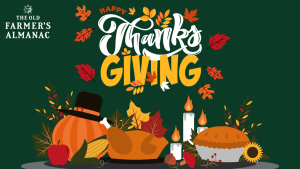
If you enjoyed this post, please consider subscribing to ForeignCorrespondent and tell your friends to subscribe. “It’s free—what a deal!” If you’ve received this from a friend and would like to be added to our distribution list for future blog posts, simply enter your email in the notifications box to sign up:
https://ronaldyatesbooks.com/category/foreign-correspondent.
You can also find my commentaries on Substack at https://ronyates.substack.com/ and the American Free News Network at https://afnn.us.
Please feel free to comment: We genuinely love hearing from you!

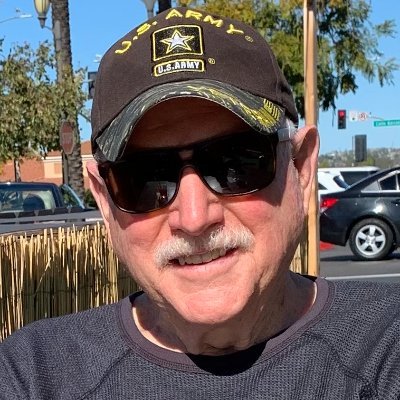
Nice to get an update on things I had forgotten about Thanksgiving!
Thanks Ron and a Happy Thanksgiving to you and your Family!
R H
Thanks. Sorry for the late reply. I hope you guys had a happy Thanksgiving too!